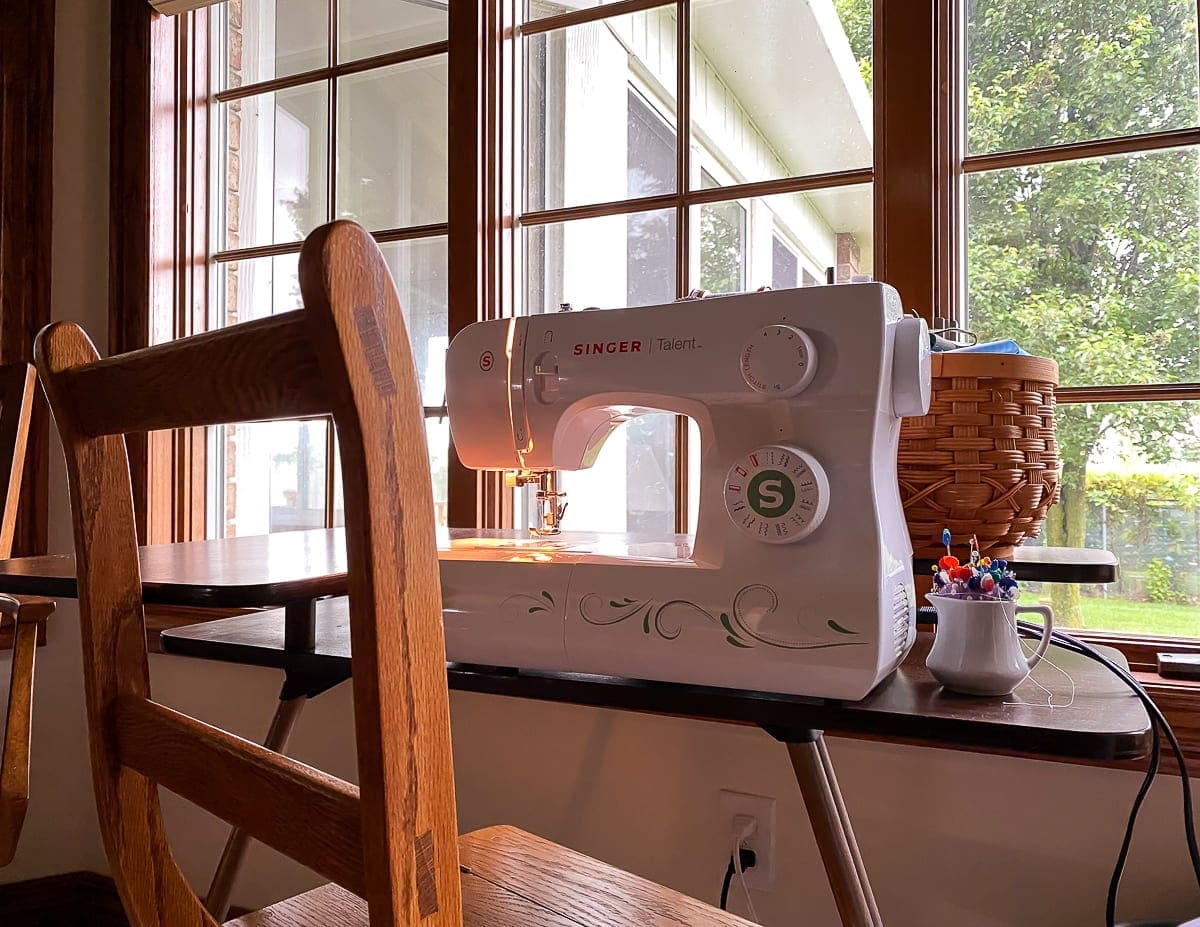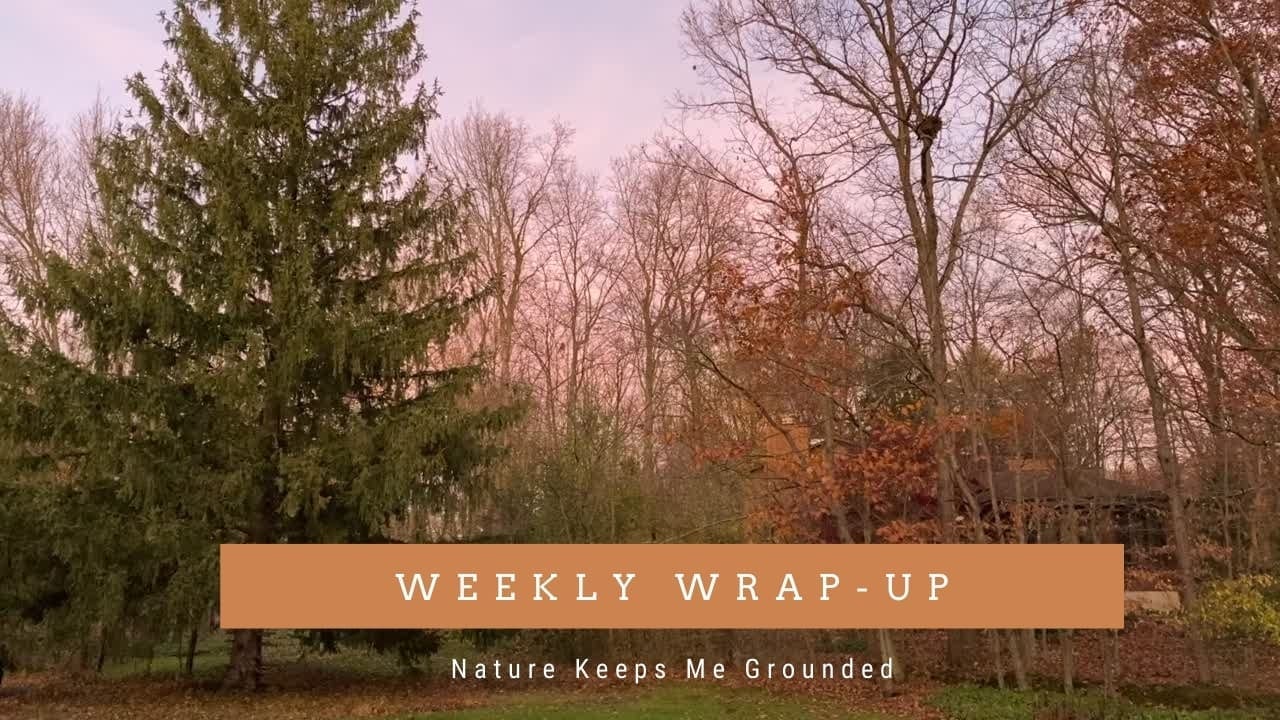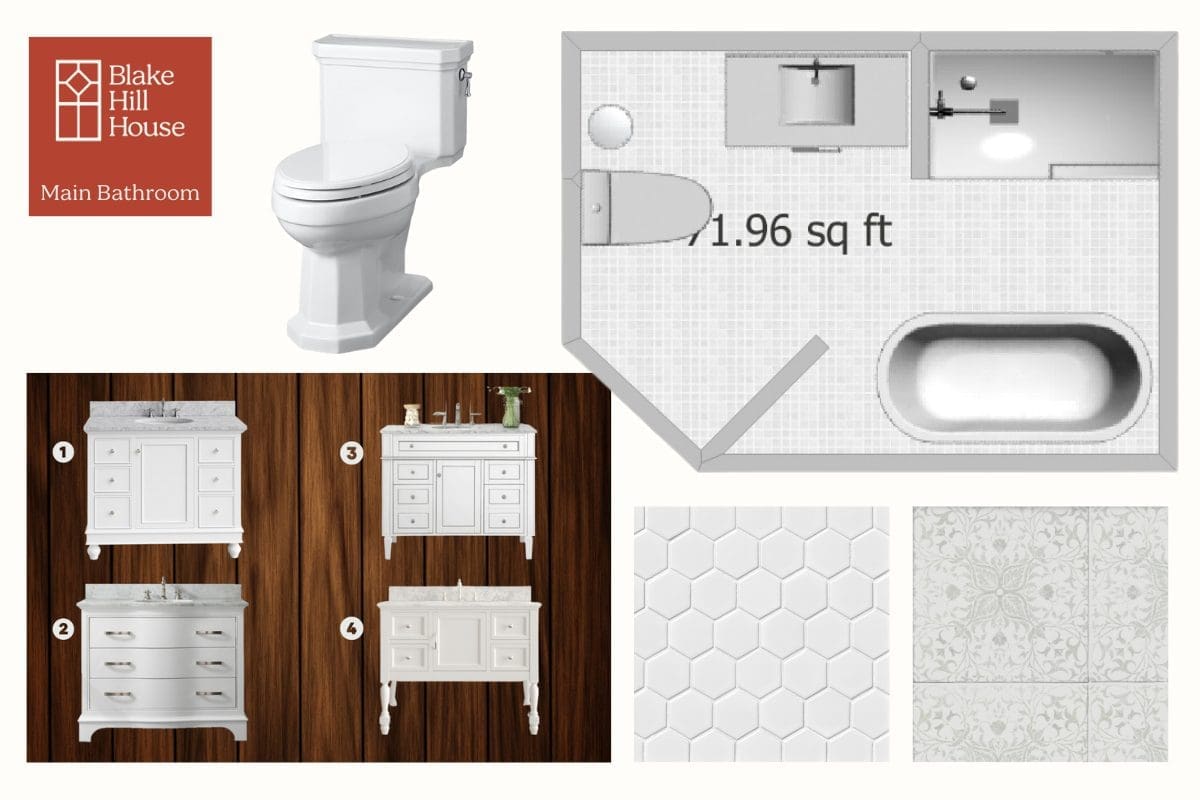A couple of months ago on Instagram, I talked more in-depth about our bedroom project for the One Room Challenge. During that chat, I talked about sewing pillow covers with my mom while I was in Missouri, and many people expressed an interest in learning more about sewing. So, since I am responsible for finishing those pillows, I thought I would offer a short series here on the blog and Instagram starting with today’s post. My mom has way more experience than I do, so I picked her brain about choosing sewing machines for beginners during my visit.
As I mentioned last week,
My mom, Vera, has been sewing for nearly her entire life. She sewed all through high school and college, and I wore about an equal amount of hand-me-downs and mom-made clothing as a child. She made all of my prom dresses, my wedding dress, and when she retired from a long career as a children’s librarian, she took up quilting.
A Brief History of my Apathetic Relationship with Sewing
My feeling about sewing can best be summed up as indifferent. I, too, learned to sew at a very young age. My mom taught me. I worked my way through 4H and Girl Scouts sewing and doing handicrafts with varying levels of enthusiasm. Then, I stitched my way through Home Ec in high school and barely squeaked out a B- from an entire semester of sewing. The only reason why I took that dedicated sewing class was that I thought it would be an easy A, and I was trying to impress my ex-boyfriend’s mother, who was the teacher. However, the C+ I carried most of that semester tells the real story. I wasn’t that great at technical sewing, and my teacher wasn’t overwhelmed by my ability either.
Patterns were my nemesis, and I did not enjoy the tedious pre-work of measuring and making alterations for fit. In short, I did not enjoy making clothing whatsoever.
In my early 20s, scrambling for money, I got it in my head that I would buy a sewing machine and start making some clothes again. It didn’t take me long to realize that thrift shop clothing was much cheaper than handmade. Still, I owned a sewing machine that I dragged around for seven years until it led me to my first big break as an entrepreneur.
After my first child was born, I joined an online group of moms who were also cloth diapering. We started a trading group for natural baby products, and I dusted off my sewing machine. I began designing and sewing fleece and wool diaper covers for cloth diapers to barter for other goods. They became very popular, and that unexpected beginning expanded into an entire cloth diaper cover company with retail and wholesale business. It turns out that I was very good at sewing one particular item over and over again.

At my company’s height, a small factory in Indiana sewed my designs, and I had a shipping assistant who also put the finishing touches on each cover. After that, I moved into the role of sales, sourcing materials, and design. Then, in 2002, the company was at a crossroads. I needed my own local full-time sewing crew and a dedicated building. By that time, I had worn out three sewing machines and one serger, and I wasn’t sure if I would ever want to sew anything ever again.
After a lot of thought, I decided that I did not want to be the person to take my company to the next level. So, in 2003 (I think!) I sold my entire business to a cloth diaper company in San Diego, and I never looked back.
My sewing mojo never returned in full, but I have mustered up the enthusiasm for a few projects since then, like the quilt that I made for my daughter, cabinet curtains, and a few masks, of course.
While sewing is certainly not my favorite way to pass the time, the process of using a machine and understanding how things are constructed is so ingrained at this point that I couldn’t forget how to sew if I tried.
Sewing Machines For Beginners
I am very grateful to my mom for serving as my primary resource for this portion of the article.

If I want to buy a sewing machine, how do I even start?
The first thing to do is to decide what you want to do with your machine. Prices range from $100 to $10,000+ (eek!), so it’s wise to consider how you want to use your machine first.
The most basic sewing machines for beginners and experienced sewists alike include the option for a straight stitch, zig-zag, and buttonhole. With those three stitches, you can do everything from clothing and crafts to piecing full-sized quilts. If you want to move beyond piecing and into actual machine quilting, you’ll need to spend extra on a machine that has a larger gap between the needle on the left and the motor on the right to fit bulky full-sized quilts. Alternately, you could piece your quilt on a basic model and send it off to a quilter with a long-arm machine to have it finished or learn to hand quilt. Embroidery machines are a different beast altogether.
Almost every basic model also includes additional feet to make sewing buttonholes and zippers easier and some cleaning tools. Extra feet for specialized use can be purchased separately.
Vera’s Notes: There are two nice upgrades to have. The first is a clear bobbin door to see when your bobbin is getting close to empty. Then, you can replace it before it runs out mid-seam. The other is having a machine that always stops with the needle in the down position. This may not make sense right now, but that feature will be helpful as you learn to sew.
Where should I buy my sewing machine?
You can buy your sewing machine in several places. The most popular are chain retailers, local independent fabric stores, or even online. However, there are some benefits and drawbacks to each.
| Pros | Cons | |
| Chain Retailer | -Lower prices + coupons -Basic models available -Possible online or in-person classes (purchased separately) -Try before you buy | -No machine maintenance department -Very little product support after purchase |
| Independent Fabric Store | -Support a local business -Try before you buy -Basic sewing lessons often available -Advanced classes possible as you progress -Various perks are often included with a purchase, such as lessons or a maintenance contract. -Nurture a personal relationship with other crafty people like you. -Machine maintenance pros are often available | -May not carry basic models due to limited retail space -More expensive with the bump up beyond basic machines -Possible high-pressure sales |
| Online | -Lower prices -Basic models readily available -The homebody’s dream way to buy everything | -Little to no product support -No human interaction or lessons of any kind -Difficult or inconvenient to exchange if you are unhappy with your purchase |
Which Brand Should I Buy?
Vera’s Note: If you ask ten people who sew which brand to buy, you’ll get ten different answers. Just like with most things, people develop a strong personal preference.
Keeping that in mind, here are a few basic sewing machines for beginners made by popular brands:
- Janome 2206 (Elna is the high-end counterpart)
- Janome Mod-19 – This higher-priced model is marked down almost $200, and it has a clear bobbin door.
- Singer Fashionmate 3333 – This model has a clear bobbin door.
- Singer Start 1304 – Small and lightweight
- Brother GX37 – This one comes in heavy at 15 lbs, but it does have a clear bobbin door, which is rare at this price point.
- Bernette 33 – The Bernette brand was launched in 1989 by Bernina owner, Odette Ueltschi. Bernina is a very high-end brand. Bernettes offer solid Bernina quality at a more affordable price point. Bernina machines are manufactured in Switzerland and Thailand. Bernettes are manufactured only in Thailand.
- EverSewn Sparrow 15 – This is a new-to-me brand, but my mother (Vera) has used the EverSewn brand at the local quilt shop, and she gave it a thumb’s up.
Other notable brands of sewing machines for beginners include Pfaff and Baby Lock. Basic models are available in both brands. My mom and I have used all of the brands listed except Janome. I kept it in the mix because it gets good reviews.
Secondhand Sewing Machines For Beginners
Buying a machine secondhand is always a possibility with a few caveats.
- If you can, try out the machine first to make sure it still works before you pay.
- Ask the owner when the machine was last serviced, if ever. Experienced sewists selling their machine so they can trade up will likely have this information for you.
- If the machine has been sitting around unused for long periods (1 year +), you’ll want to schedule a tune-up at a sewing machine repair shop.
- Alternately, if the machine has been used regularly for over 300 hours without a tune-up, it’s time.
Routine sewing machine maintenance costs approximately $120, but it will cost more if there is something wrong with the machine. So remember to factor that into the overall secondhand price tag.
If you have a sewing machine on your wish list, hopefully, this post will help you narrow down your options to make a decision.
Pin it for later!

Many thanks to my mom for her experienced advice. She told me to expect this particular article to be somewhat controversial, and now I’m not sure what I’ve gotten myself into. If some sewing machine drama goes down, I’m ready. I have teenagers, and there ain’t no drama like teenage drama. Come at me, bro.






2 Comments
Sherrill
That’s an impressive story. As far as choosing a sewing machine for beginners goes, I would add to look for quality over lowest price. Machines with a high percentage of plastic parts get out of adjustment more quickly. The new sewist thinks the problem is their inexperience, not the cheap machine. Frustration and a dislike for sewing results.
Stacy
Hi Sherrill, You bring up a good point about plastic vs. metal, and my mom mentioned that too. Metal will always hold up better. I agree! However, my mom said she has switched to a lighter-weight low-end plastic machine because she takes it with her to summer quilt camp, guild, and where she teaches lessons. Her heavy Bernette became more difficult for her to lug around. I think the same could be a factor for someone without a dedicated sewing area. Also, set-up and clean-up with a heavy machine could dissuade some new sewists.